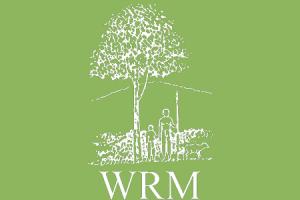Vietnam has a history of tree plantation programmes dating back to 1956. According to a report by Nguyen Ngoc Lung, Director of Vietnam's Forest Development Department, between 1956 and 1992 an area of over 1 million hectares was planted with trees. However survival rates have been poor and much of the wood produced has been exported as wood chips to Japan or Taiwan.
Large-Scale Tree Plantations
Industrial tree plantations are large-scale, intensively managed, even-aged monocultures, involving vast areas of fertile land under the control of plantation companies. Management of plantations involves the use of huge amounts of water as well as agrochemicals—which harm humans, and plants and animals in the plantations and surrounding areas.
Bulletin articles
17 September 2000
Bulletin articles
17 September 2000
Coinciding with the conquest of the vast territory of Argentina by the Buenos Aires centralized government, started in the second half of the 19th century in the name of modernization, forests in different regions of the country entered a period of decline which has continued until present times. The two cases mentioned below are only examples of a process happening throughout the country.
Bulletin articles
16 September 2000
It is already a well-known fact that large scale tree monocultures result in a large number of social and environmental impacts. However, we had not yet heard of a situation such as that of Fiji, where plantations generated such acute social and economic tensions that they eventually led to a coup d'etat.
Bulletin articles
16 September 2000
Friends of Hamakua is gravely concerned over a proposed plywood/veneer plant and about the State Forest Hamakua Management Plan, which would imply the harvesting of 4,000 acres of old "non-native" plantations. There are several reasons for this concern. Access roads will have to be built into all of these, many forested areas. Once harvesting begins, all public access to these roads will be closed off due to liability concerns. Once the roads are in place, access will be gained to the few remaining native tree stands, which the plan says, may be removed if necessary.
Bulletin articles
17 August 2000
In 1997, the negotiators of the Kyoto Protocol came up with an ingeniously-named project: the "Clean Development Mechanism." For the lay person, the message was that the governments of the world had finally agreed to create a mechanism that would allow development atmospherically non-polluting. But what this wording hides is anything but clean.
Other information
17 August 2000
Plantation projects using tree monocultures to sequester carbon being implemented in UGANDA by two Norwegian firms constitute a paradigmatic example of the rationale and the consequences of this kind of projects.
Other information
17 August 2000
Giant AUSTRALIA is a major actor in the geopolitics of Oceania. With its particular situation in the Southern hemisphere but being a Northern country and included in the Annex I countries, Australia is the only country that enjoys the possibility of increasing its greenhouse gas emissions by 8% above 1990 levels in the commitment period 2008 to 2012. Nevertheless, this country has enthusiastically embraced the idea of offering its territory for forestry-based carbon sink projects.
Other information
17 August 2000
Responding to a request of the U.S.-based independent electrical power producer Applied Energy Services Inc. (AES), in 1988 the World Resources Institute identified and evaluated forestry projects to compensate the carbon dioxide emissions of the company's new coal-fired powerplant in Connecticut, expected to emit about 14.1 million tonnes of carbon over its 40-year lifespan.
Other information
17 August 2000
In the last decades several South American countries have been the scenario of the expansion of tree monocultures --basically eucalyptus and pines-- mostly devoted to pulp production. The newly created carbon market can mean a renewed push to further expand this activity, this time with a new or additional purpose. In fact, forestry companies and some governments are very enthusiastic about the idea of using part of the already existing plantations and installing new ones to serve as carbon sinks.
Bulletin articles
17 August 2000
One of the main aims of some industrialized-country negotiators at the Convention on Climate Change is to have plantations accepted as carbon sinks within the so-called Clean Development Mechanism. The reasoning seems quite straightforward: while trees are growing, they take carbon dioxide from the atmosphere and fix the carbon in their wood. They thus act as "carbon sinks" and therefore help to counter climate change by removing carbon dioxide from the atmosphere. So what's the problem then? The answer is: plenty of things.
Bulletin articles
17 August 2000
Deforestation contributes to climate change through the release of carbon in the forest biomass. Forest conservation and rehabilitation activities thus need to be promoted both to conserve carbon --in the case of primary forests-- and to absorb it --in the case of secondary forests allowed to regrow.
Bulletin articles
17 August 2000
CDM schemes based on carbon sinks in the forestry sector, trumpeted as the panacea for climate change mitigation, are instead socially and environmentally dangerous. Nevertheless, the discussions going on at the official levels ignore those fundamental points. Undoubtedly some have much to gain from this marketing of nature. Who are the influential actors behind the scene at the carbon market? What follows is a brief description of some of the more relevant.
- Industry
